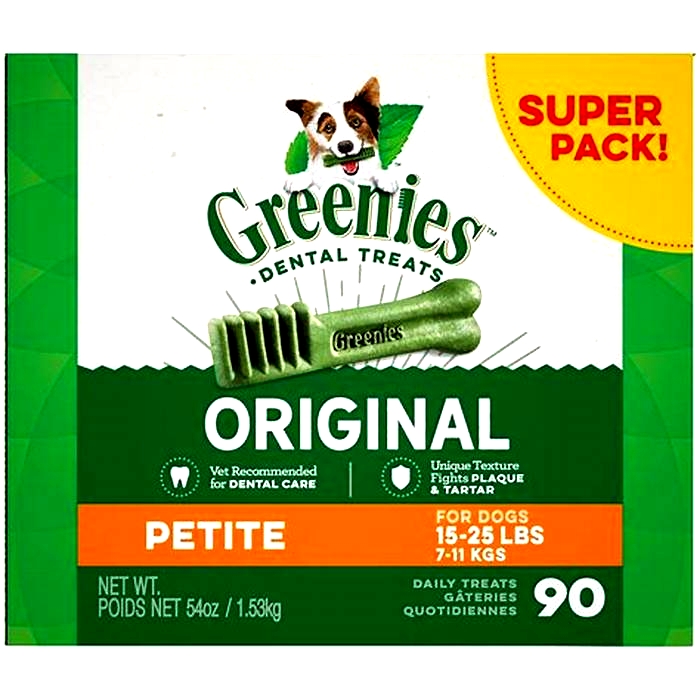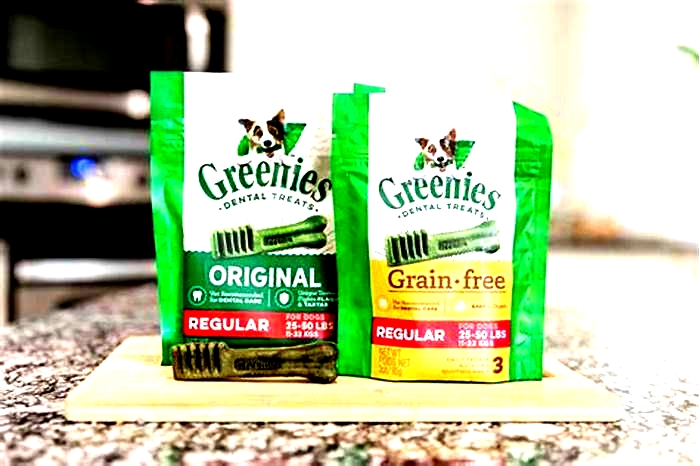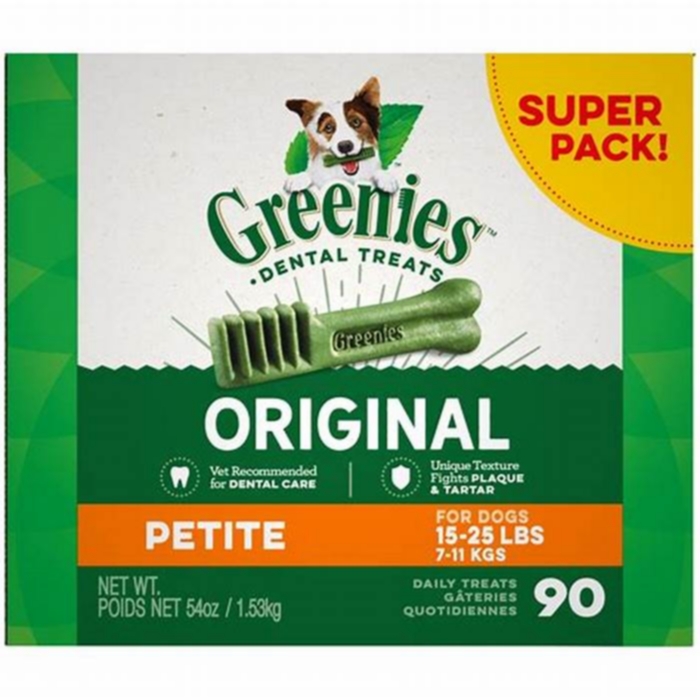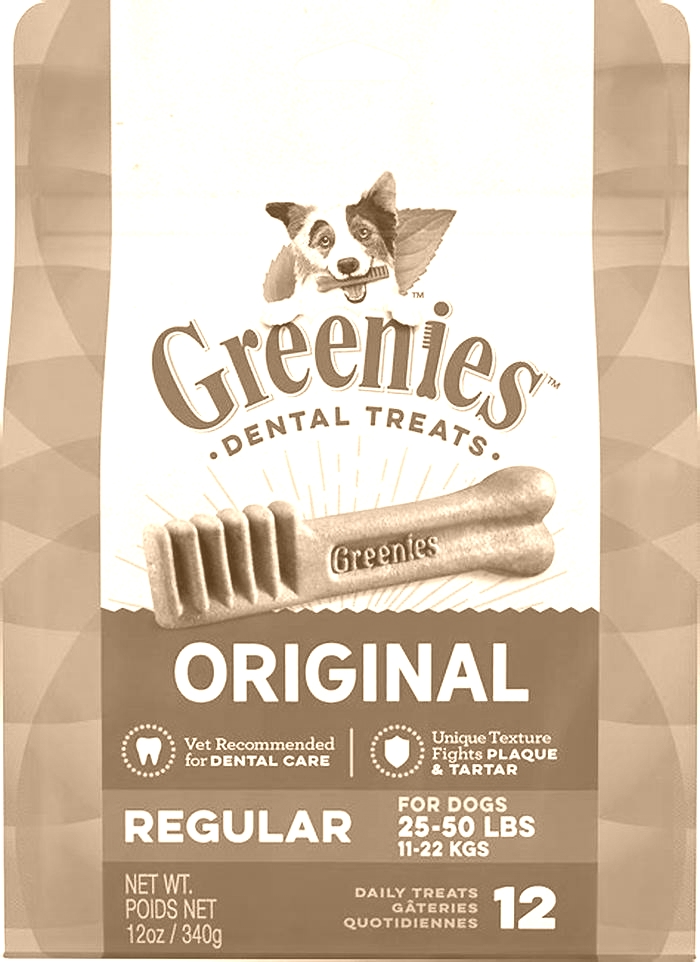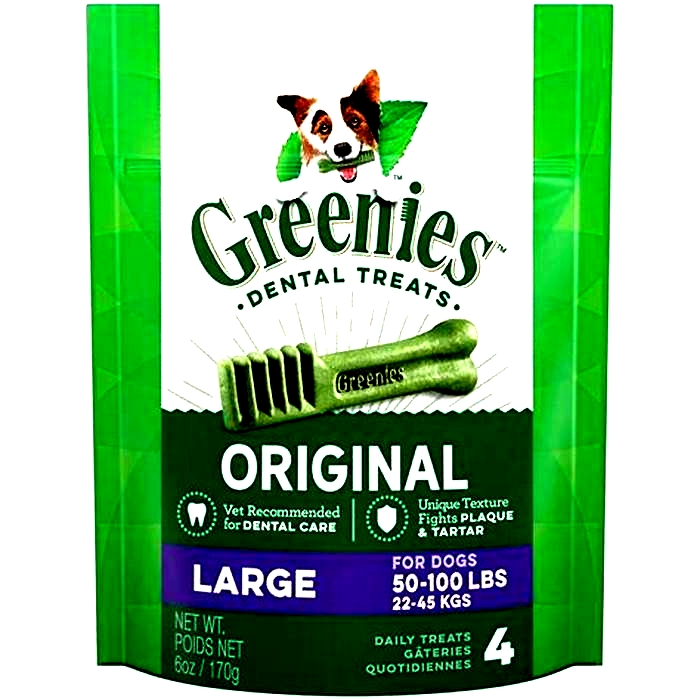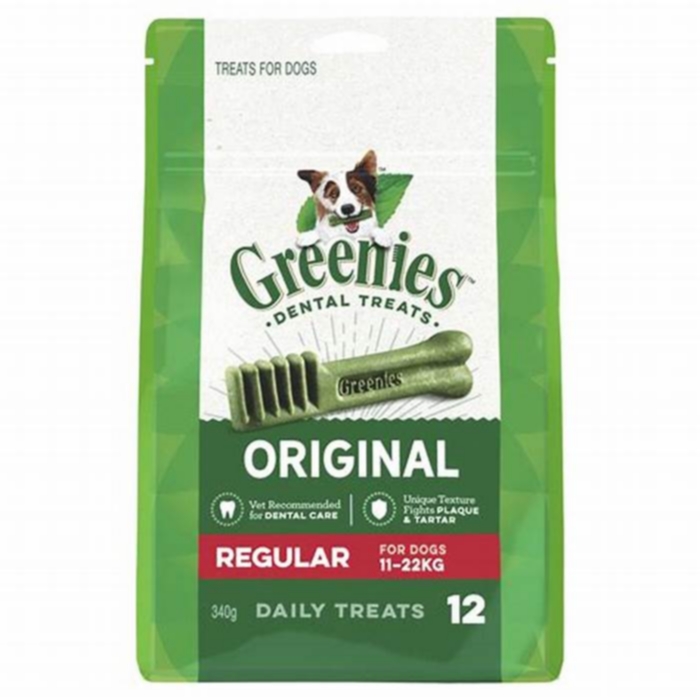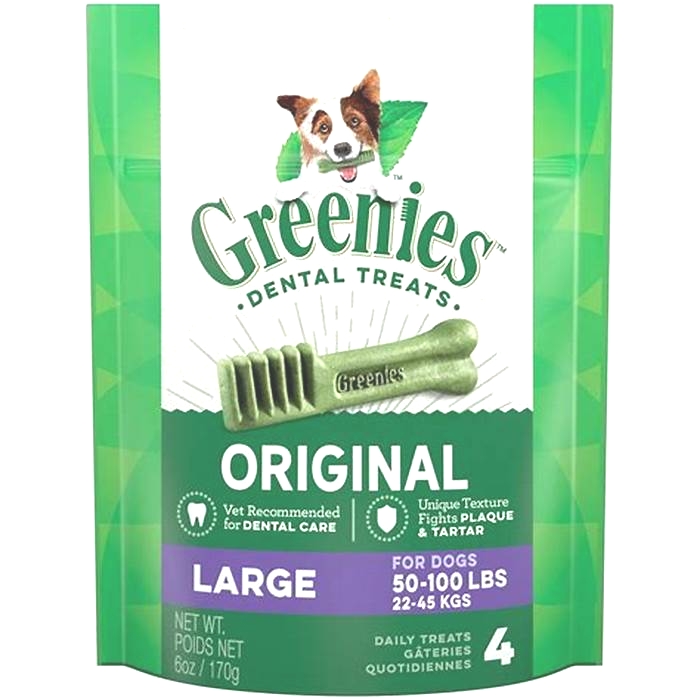greenies dog treats sizes
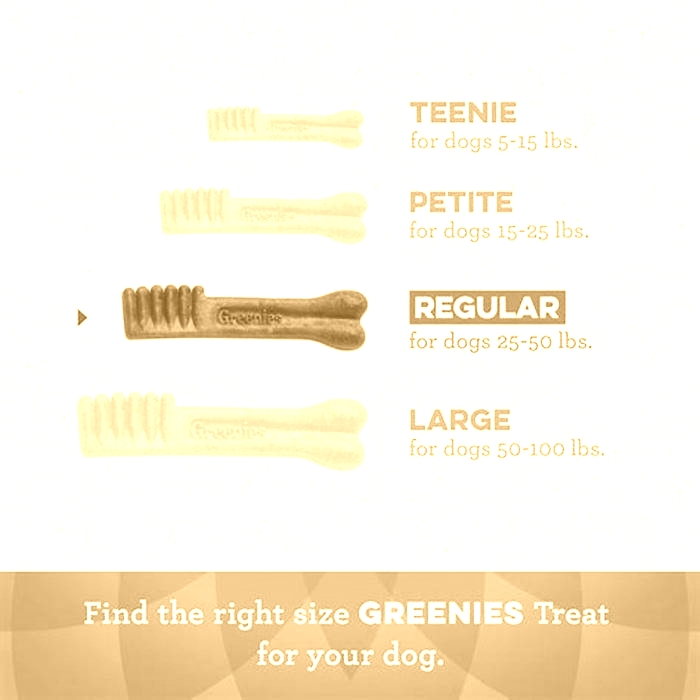
The Great Greenies Debate: Unwrapping the Controversy
Welcome, fellow pet enthusiasts and curious minds! Today, were diving deep into the world of pet dental care, specifically focusing on one of the most debated products in the pet industry: Greenies. Youve probably heard of themthose green, toothbrush-shaped treats dogs and cats go wild for. But behind the enthusiastic crunching, theres a whirlwind of controversy were here to unpack.
Charting the Controversy
Dental Delight vs. Danger
| Factor | Pros | Cons |
|---|---|---|
| Dental Health | Reduces tartar build-up | Misleading benefits for some pets |
| Digestibility | Highly digestible when chewed properly | Risk of blockages if swallowed whole |
| Ingredients | Made with natural ingredients | Potential allergens for some pets |
Popularity Trends vs. Reported Incidents
| Year | Popularity among Pet Owners | Reported Incidents |
|---|---|---|
| 2019 | High | Low |
| 2020 | Higher | Moderate |
| 2021 | Skyrocketing | Increased |
The Meat of the Matter: Navigating the Debate
The Chewy Truth
Greenies are designed to combat plaque and tartar, promoting dental health. Many pet owners report significant improvements in their pets breath and dental hygiene. However, the size and chewing habits of your furry friend play a pivotal role in the effectiveness and safety of these treats.
A Bite-Sized Warning
Not all tails wag the same way, and similarly, not all pets can handle Greenies alike. Cases of gastrointestinal blockages have been reported, predominantly when pets have swallowed large pieces without proper chewing. This raises questions about suitability for all dog and cat breeds, sizes, and ages.
Ingredient Inspection
Made with natural ingredients and boasting a nutritious profile, Greenies seem like the perfect treat. Yet, for pets with specific allergies, they might be less of a treat and more of a threat. Its crucial to scrutinize the ingredient list for potential allergens to your pet.
The Enlightened Path: Tips for Pet Owners
Know Your Pet: Understand your pets chewing behavior and select the size and type of Greenie accordingly.
Supervision is Key: Always monitor your pet when theyre enjoying their treat to avoid any choking hazards.
Allergies Alert: Check the ingredients for anything your pet might be allergic to.
Balance is Best: Treats should not make up more than 10% of your pets daily calorie intake. Greenies are no exception.
Consult the Vet: When in doubt, your vet knows best. A quick consultation can save you a lot of worries.
Conclusion: To Chew or Not to Chew
In the great debate over Greenies, theres no one-size-fits-all answer. They can be both a boon and a bane, depending on individual circumstances. Armed with the right information and a keen eye on your pets reaction, you can make an informed decision. Remember, the ultimate goal is your pets health and happiness. So, chew over the information, consult your vet, and keep those tails wagging safely and healthily!
An Expert Dives Deep into the Greenies Dialogue
Interviewer: Welcome! Today, were peeling back the layers of the Greenies controversy. Weve got an expert with us whos ready to sink their teeth into the matter. Lets dive right in. First off, can you share your initial thoughts on Greenies?
Expert: Absolutely, and thank you for having me. Greenies sit at this fascinating intersection of innovative pet care and consumer caution. Initially designed as a dental health solution, theyve become a household name. However, like any product that gains rapid popularity, theyre scrutinized, and rightfully so. The first thing I think of is the balance they try to strike between being a treat and a health product.
Interviewer: Speaking of scrutiny, there have been reports of health incidents. How do you weigh the benefits against the potential risks?
Expert: Its a complex equation. On one side, we have numerous testimonials praising Greenies for transforming pets dental health, with visibly cleaner teeth and fresher breath. These are non-trivial benefits, given the commonality of dental issues in pets. However, the risk factor, primarily the potential for gastrointestinal blockages, cant be ignored. It emphasizes the importance of responsible pet ownershipknowing your pets chewing habits, supervising treat time, and choosing the right size of Greenie. The product isnt inherently risky; its the context of use that dictates safety.
Interviewer: Thats an insightful perspective. How significant is the role of ingredients in this debate?
Expert: Its pivotal. The ingredient list of Greenies is a double-edged sword. On the one hand, it boasts natural ingredients, which is a big plus for pet owners seeking wholesome options. Yet, the inclusivity stops there. Pets with specific dietary restrictions or allergies could have adverse reactions. This isnt unique to Greenies but is a broader industry issuecreating a product that caters to every pets needs is challenging. Transparency and education around ingredients become crucial here.
Interviewer: With those points in mind, how should pet owners approach Greenies for their pets?
Expert: Thoughtfully and selectively. The key is not to get swayed by marketing or hearsay but to understand your pets health, dietary needs, and behaviors. No two pets are the same; whats a miracle treat for one might be less suitable for another. Always introduce any new treat, including Greenies, gradually, and observe your pets reaction. And, as always, keep your vet in the loop. They can provide tailored advice that neither the internet nor the back of a treat package can offer.
Interviewer: To wrap up, what future do you see for products like Greenies in the pet care market?
Expert: The trajectory for Greenies and similar products is promising but calls for innovation and adaptability. As we become more aware of our pets health needs and as our pets continue to be integral family members, the demand for high-quality, safe, and effective pet products will only grow. The future lies in research, refinement, and perhaps a move towards more personalized pet care solutions. Products like Greenies have opened doors and started conversations; its now about how we evolve those discussions into actions that prioritize pet health and safety above all.
Interviewer: Thank you for such a deep dive into the world of Greenies. Your insights certainly give our readers a lot to chew on.
Expert: It was my pleasure. Heres to making informed choices for the health and happiness of our furry friends!
HELP US PUT FOOD ON THE TABLE
At What Age Can Dogs Have Greenies? Safe Treats Explained
If youre a dog owner, you know how important it is to keep your furry friend healthy and happy.
Part of that involves taking care of their teeth and gums, which is why dental treats like Greenies have become increasingly popular in recent years.
But is it safe to give Greenies to all dogs, and at what age can dogs have Greenies?
In this article, well discuss the importance of safe treats for dogs, the benefits and potential risks of dental chews, and when its appropriate to start giving Greenies to your furry companion.
Key Takeaways:
- Safe treats are important for maintaining your dogs dental health.
- Dental treats like Greenies can help prevent dental issues like plaque and tartar buildup.
- Its important to choose age-appropriate treats and monitor your dog during treat time.
At What Age Can Dogs Have Greenies?
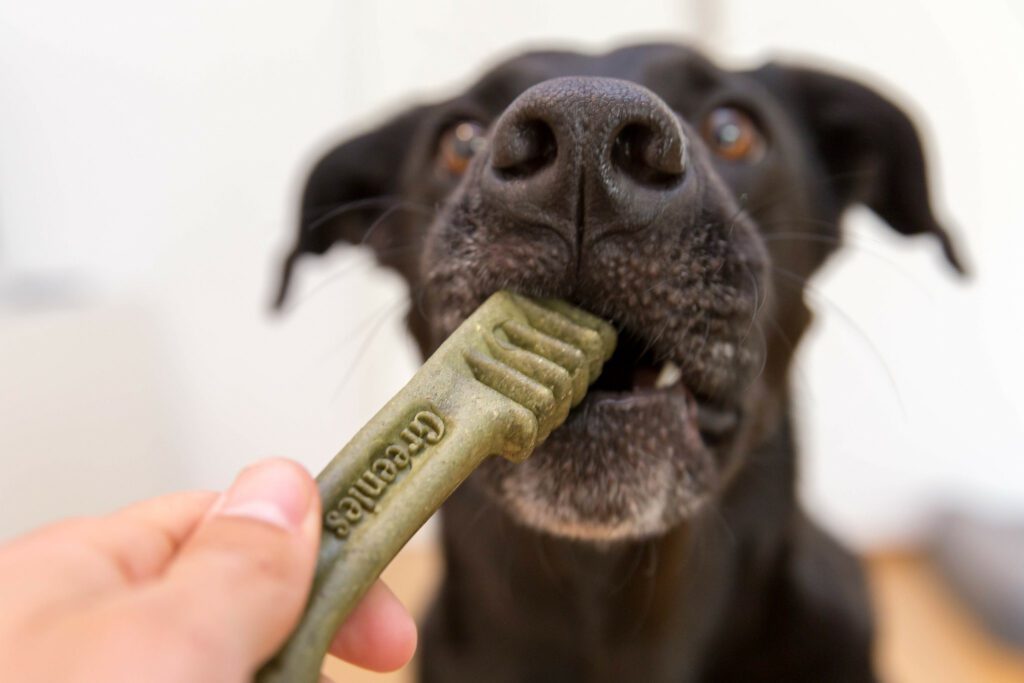
Dogs can start having Greenies dental treats when they are around six months old, as younger puppies may not have fully developed jaws and their teeth are not yet permanent.
A puppys jaw may not be fully developed enough to chew these treats before the age of six months.
However, its important to note that there are different types of Greenies specifically made for dogs of varying ages and sizes.
Understanding Dog Dental Treats

Dental care is an integral part of your dogs overall health and well-being. Just like humans, dogs can suffer from tooth decay, gum disease, and other dental problems. This is where dental treats come in handy.
Dental treats are designed to help clean your dogs teeth and promote good oral hygiene. They come in a variety of shapes, sizes, and flavors to suit different tastes and needs. Some are designed to be chewed, while others can be eaten quickly like Greenies.
Chews, for example, often require a longer time to break down, which can scrape away plaque and tartar buildup. This type of treat is perfect for dogs who love to chew and gnaw.
Treats like Greenies, on the other hand, work by mechanically cleaning the teeth as your dog chews. This type of treat is ideal for dogs who are not big chewers but still require some form of dental care.
Understanding Dog Dental Treats Types
There are different types of dental treats available in the market. Some of the most common ones include:
| Type of Treat | Description |
|---|---|
| Chews | Typically made from rawhide, bones, bully sticks, or other natural ingredients, chews promote chewing behavior, which helps clean teeth and remove plaque. They are suitable for dogs of all ages and come in various sizes to suit different breeds and mouth sizes. |
| Greenies | Greenies are dental chews designed to clean teeth and freshen breath. They are made from natural ingredients, including chlorophyll, and have a unique texture that cleans down to the gumline. They are ideal for dogs who are not big chewers and need a treat that is easy to digest. |
| Dental Sticks | Dental sticks are designed to be chewed and are often shaped like a toothbrush. They are made with ingredients like sodium tripolyphosphate, which helps remove plaque and tartar buildup. Dental sticks are ideal for dogs who love to chew and come in various sizes to suit different breeds and mouth sizes. |
Regardless of the type of dental treat you choose, it is important to use it as part of a comprehensive dental care routine that includes regular brushing and checkups with a veterinarian.
Choosing Safe Chew Treats for Puppies
When it comes to choosing chew treats for puppies, there are some specific considerations to keep in mind to ensure their safety and well-being.
Puppies have fragile teeth that are still developing, and they are also more prone to choking hazards than adult dogs.
Here are some important factors to consider when selecting safe chew treats for puppies:
| Factor | Consideration |
|---|---|
| Age | Puppies have different dental needs throughout their development. Be sure to choose a chew treat that is appropriate for your puppys age to avoid damaging their teeth or gums. |
| Size | Choose a chew treat that is the appropriate size for your puppy. Treats that are too small can be a choking hazard, while treats that are too large can be difficult for your puppy to chew. |
| Texture | Choose a chew treat with a softer texture for puppies. Hard treats can cause damage to their young teeth and gums. Also, avoid treats with sharp edges that could harm your puppys mouth. |
| Ingredients | Check the ingredients list to make sure that the chew treat does not contain any harmful substances or allergens that could cause an adverse reaction in your puppy. |
Some safe chew treat options for puppies include soft rubber toys, natural chews made from safe materials, and specially designed puppy chew treats that can help promote healthy chewing habits.
Always supervise your puppy when giving them a chew treat to ensure their safety and remove any small pieces that may break off during chewing.
Understanding the Benefits of Greenies
Greenies are a popular dental chew treat for dogs that offer many benefits for their oral health. By promoting chewing and reducing plaque and tartar buildup, these treats can help maintain your dogs dental hygiene.
Here are some of the specific benefits of using Greenies for your dog:
- Clean teeth: Greenies are designed to help scrub teeth as your dog chews, removing plaque and tartar buildup. This can lead to cleaner teeth and fresher breath.
- Reduces risk of dental issues: By keeping teeth clean, Greenies can help reduce the risk of dental issues such as gum disease or tooth decay.
However, its important to be aware of any potential risks or concerns associated with Greenies, such as choking hazards or ingredient sensitivities. Always supervise your dog during treat time and talk to your veterinarian if you have any concerns about introducing Greenies into your dogs diet.
Importance of Pet Dental Hygiene
Dental hygiene is crucial for maintaining overall health and well-being in dogs. While many pet owners focus on their dogs physical exercise and diet, dental care is often overlooked or neglected. However, dental issues can lead to a range of health problems, including infections, kidney disease, and heart disease.
Regular brushing and dental check-ups are essential for ensuring healthy teeth and gums in dogs. In addition to these preventative measures, dental treats like Greenies can play a role in maintaining oral hygiene and reducing the risk of dental issues.
Dogs with poor dental hygiene are at risk of developing plaque and tartar buildup, which can lead to gum disease and tooth decay. Dental treats like Greenies help remove plaque and tartar through mechanical action, reducing the risk of dental issues and promoting fresh breath.
However, its important to note that dental treats should not be used as a substitute for regular dental care, and should be incorporated as part of a comprehensive dental hygiene routine.
By prioritizing dental hygiene in dogs, pet owners can help ensure their furry friends lead a healthy and happy life. Regular brushing, dental check-ups, and the incorporation of safe dental treats like Greenies can all play a role in maintaining healthy teeth and gums in dogs.
Other Safe Treat Options for Dogs
While Greenies are a popular choice for dog dental care, there are other safe treat options available to pet owners.
Rawhide chews are a common alternative to Greenies. However, it is important to choose rawhide chews that are specifically labeled as digestible and free from harmful chemicals or additives. Be sure to supervise your dog while they chew to prevent choking or any other potential risks.
Another option is dental bones or sticks, which are specially formulated to clean teeth and freshen breath. These treats are available in different sizes to accommodate various dog breeds and can be a great addition to a regular dental care routine.
For dogs who prefer softer chews, consider dental chews made with natural ingredients such as sweet potatoes or pumpkin. These treats are gentle on the teeth and can provide a tasty and healthy alternative to traditional dental treats.
When choosing safe treat options for your dog, always read labels carefully and consult with your veterinarian if you have any concerns or questions.
Introducing Greenies to Dogs
When introducing Greenies to dogs, its essential to take a gradual approach to help your pet get accustomed to the new treats. Begin by giving your dog a small piece of Greenies, and observe their reaction. If your dog shows no adverse reactions, such as vomiting or diarrhea, you can slowly increase the treats size over time.
Its recommended that you monitor your dog during treat time to ensure they arent swallowing the treat whole, which can pose a choking hazard. Also, supervise your dog when they are chewing on the treat to prevent them from biting off large pieces and swallowing them whole.
Its essential to consider the specific needs of your dog before introducing Greenies. For example, dogs with certain health issues or dietary restrictions may not be suitable for Greenies. Always consult with your veterinarian before introducing any new treats to your dogs diet.
Monitoring and Maintaining Dental Health
While incorporating dental treats like Greenies into a dogs routine can greatly benefit their oral hygiene, it is important to remember that they are not a substitute for regular dental care. Consistent monitoring and maintenance of a dogs dental health is crucial to prevent dental issues and promote overall health.
To ensure proper dental care, it is recommended to schedule regular veterinary dental check-ups and cleanings. During these appointments, a vet can evaluate a dogs dental health and provide recommendations for specific dental care needs. This may include more frequent brushing or the use of dental products tailored to the dogs needs.
In addition to regular check-ups, owners can monitor their dogs dental health at home. This includes examining the dogs teeth and gums for any signs of discoloration, swelling, or bad breath. Any unusual findings should be reported to a vet as soon as possible.
Owners can also maintain a regular dental care regimen for their dogs at home. This may include regular teeth brushing with a dog-specific toothbrush and toothpaste, the use of dental wipes or dental sprays, and the incorporation of dental treats like Greenies into the dogs routine. By consistently prioritizing dental health, owners can help ensure their dogs overall health and well-being.
Consistency and Frequency of Treats
While dental treats like Greenies can be a great addition to your dogs oral hygiene routine, its important to ensure they are not overindulging in treats. As a general rule, treats should make up no more than 10% of your dogs daily calorie intake. This means that if your dog has a daily calorie requirement of 500, they should have no more than 50 calories from treats.
The frequency of giving treats will depend on your dogs individual needs and dental health. In general, its recommended to give dental treats like Greenies once a day, preferably after a meal. However, if your dog is prone to dental issues or has a special dietary requirement, its best to consult with your veterinarian for a personalized recommendation.
Its also important to be consistent with the types and sizes of treats you give your dog. This helps prevent any digestive issues or sudden changes in the dental care routine. Stick to treats that are appropriate for your dogs age, breed, and size.
Remember, moderation is key when it comes to treats. Too many treats can lead to weight gain and other health issues, so be sure to incorporate dental treats like Greenies into a well-rounded diet and dental care routine.
Addressing Common Concerns and Risks
As with any new addition to a dogs diet, there may be concerns and risks associated with giving dental treats like Greenies. It is important to be aware of these potential risks and take preventative measures to ensure your dogs safety and well-being.
Choking Hazards
One of the main concerns with dental treats and chews is the risk of choking. To minimize this risk, it is important to choose treats that are the appropriate size for your dog and to monitor them while they are enjoying these treats. Always supervise your dog when they are eating Greenies or any other dental chew.
Ingredient Sensitivities
Sensitive dogs may have allergies or intolerances to certain ingredients found in dental treats like Greenies. Be sure to read the ingredients list carefully and choose treats that are free of any potential allergens for your dog. If you are unsure, consult with your veterinarian before introducing new treats into your dogs diet.
Supervision and Monitoring
Dental treats like Greenies are designed to be chewed and not swallowed whole. Dogs that swallow large pieces of treats may experience issues digesting them, leading to stomach discomfort or other complications. To avoid this, always supervise your dog while they are enjoying dental treats and monitor their digestion afterward.
Preventing Overindulgence
While dental treats like Greenies are a great addition to a dogs dental care routine, it is important not to overindulge in them. Giving too many treats can lead to weight gain, digestive issues, and other health problems. Follow recommended serving sizes and consult with your veterinarian if you have any concerns about your dogs treat consumption.
By being aware of these common concerns and risks, and taking necessary precautions, you can safely integrate dental treats like Greenies into your dogs oral care routine, helping to keep their teeth and gums healthy and strong.
FAQ
Q: At what age can dogs have Greenies?
A: Dogs can start having Greenies when they are a few months old and have their adult teeth. It is important to wait until their teeth are fully developed to ensure safe chewing.
Q: What are some safe treats for dogs?
A: Besides Greenies, there are many safe treat options for dogs, such as dental chews, rawhide alternatives, and natural chew treats. It is important to choose treats that are appropriate for your dogs age, size, and dental health condition.
Q: What are dental treats for dogs?
A: Dental treats are specifically designed to promote oral hygiene in dogs. They are formulated to help clean teeth, reduce plaque and tartar buildup, freshen breath, and maintain overall dental health.
Q: Can puppies have chew treats?
A: Puppies can have chew treats, but it is vital to select age-appropriate options. Avoid treats that can be choking hazards and opt for softer chew treats that are gentle on their developing teeth and gums.
Q: When should I start giving Greenies to my dog?
A: You can start giving Greenies to your dog once they have their adult teeth, around 6 months old for most breeds. It is recommended to consult with your veterinarian to determine the best time based on your dogs dental development.
Q: What are the benefits of Greenies?
A: Greenies are dental chews for dogs that help clean teeth, reduce plaque and tartar buildup, freshen breath, and promote overall dental health. However, it is important to provide them in moderation and according to your dogs needs.
Q: Why is pet dental hygiene important?
A: Proper dental hygiene is crucial for dogs overall health. Neglecting dental care can lead to dental issues, bad breath, and even systemic health problems. Dental treats like Greenies are part of a comprehensive oral care routine for dogs.
Q: What are other safe treat options for dogs?
A: Apart from Greenies, there are various safe treat options for dogs, including different types of chew treats, dental toys, and dental care products. It is important to choose treats that suit your dogs preferences and dental needs.
Q: How do I introduce Greenies to my dog?
A: When introducing Greenies, start with a small size and gradually increase it. Monitor your dog for any adverse reactions and ensure they chew it properly. Adjust the treat size based on your dogs breed, size, and chewing habits.
Q: How do I maintain my dogs dental health?
A: Besides dental treats, it is important to have a regular dental care regimen for your dog. This includes brushing their teeth, regular check-ups with a veterinarian, and monitoring their dental health for any signs of issues.
Q: How often should I give dental treats to my dog?
A: The frequency of giving dental treats like Greenies depends on factors such as your dogs age, breed, and dental health. It is generally recommended to provide treats in moderation, a few times a week, as part of a balanced diet.
Q: What are the common concerns and risks with dental treats?
A: Common concerns with dental treats include potential choking hazards, ingredient sensitivities, and overconsumption. It is important to supervise your dog while they enjoy treats and choose high-quality, safe options.
Conclusion
Greenies dental treats can be a great way to supplement your dogs dental care routine and promote healthy teeth and gums. However, its important to keep in mind the specific considerations for your dogs age, breed, and dental health when selecting treats and introducing them to your pet.
By following the guidelines outlined in this article, you can help ensure that your dog enjoys dental treats safely and effectively.
Remember that dental care for dogs is an ongoing process, and incorporating dental treats like Greenies is just one part of a comprehensive approach. Regular dental check-ups, brushing, and monitoring your dogs overall health are all important factors in maintaining proper dental hygiene for your furry friend.
With the right information and care, you can help your dog maintain a healthy and happy smile for years to come!


